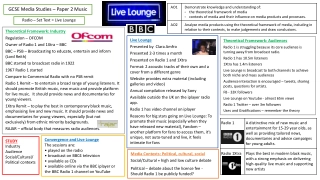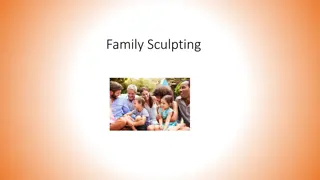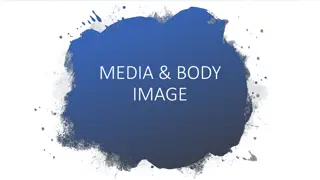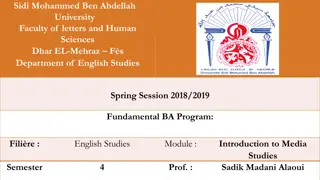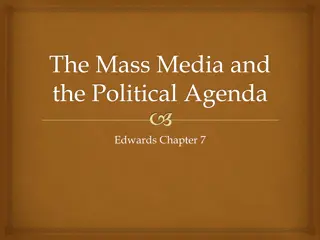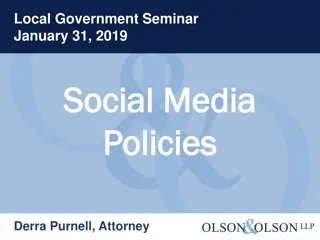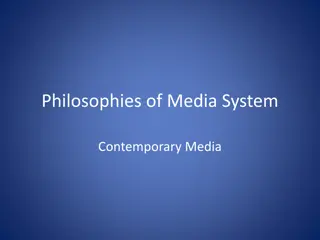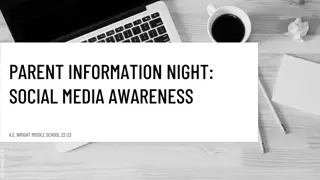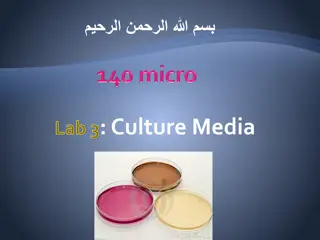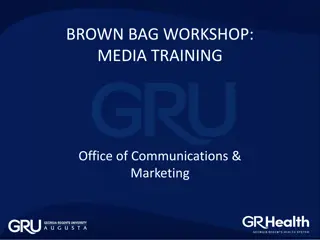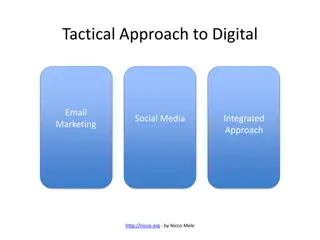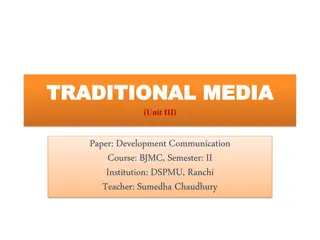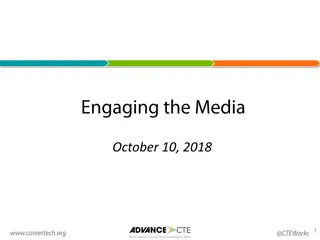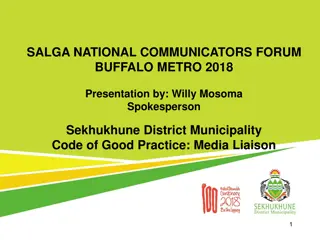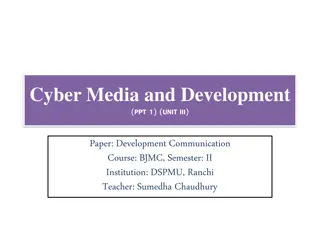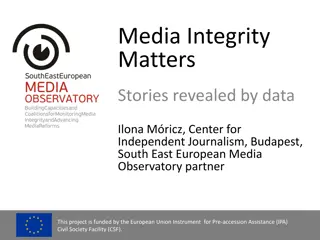Diverse Perspectives on Family Media Use
Explore the varied approaches to guiding family media use through insightful parent interviews and frameworks. Each family's context shapes their decisions, from cultural influences to personal values, highlighting the importance of tailored strategies in a world of diverse communities.
Download Presentation

Please find below an Image/Link to download the presentation.
The content on the website is provided AS IS for your information and personal use only. It may not be sold, licensed, or shared on other websites without obtaining consent from the author. Download presentation by click this link. If you encounter any issues during the download, it is possible that the publisher has removed the file from their server.
E N D
Presentation Transcript
Guiding Family Media Use: Every Family & Community is Different This project was made possible in part by the Institute of Museum and Library Services IMLS grant #LG-96-17-0220-17.
Overview Different Family Contexts examples from interviews with parents 1. Three frameworks for understanding family media use 2.
Every community, every family, and every child is different.
In Their Own Words Parent Quote #1 We are definitely strict when it comes to the boys just because it's hard being Hispanic too, you know? ... The stereotypes and stuff. So the last thing I want are my children to be violent or gang- related, or anything like that, because that's kind of why I feel like I'm way stricter when it comes to screen time and television. --Melissa, Latinx mother of 5 boys ages 7, 6, 4, 3, and 1; urban community
Parent Quote #2 Do you know what the effort is just to get them to brush their teeth every time? To get them to stay off their screens and go do something else? I spend my whole day just hovering [over] them, so that is a pipe dream. I know there are parents like, Just take them away. I guess I could. I pick my battles .other parents say like, Oh, we only let them have it at this time, but I try to steer clear of those conversations because I feel so guilty. --Nora, White mother of twin neurodivergent boys age 12, and a 14 year-old boy, very rural location
Parent Quote #3 The Bible is our standard...that's how we make decisions on what they should be watching and shouldn't be watching. That's the number one thing. * --Rhoda, White mother, two sons 8 and 6; urban community
Frameworks for Understanding Family Media Use Photo via: https://blog.wisconsinearly childhood.org/2018/07/26/ 3-essential-steps-to- helping-your-family- become-sensible-digital- users/. Used under Wisconsin Early Childhood Association.
Framework #1 Joint Media Engagement Joan Ganz Cooney Center Photo via: https://littleelit.com/2014/01/01/4185/.Used under Little Elit: Young Children, New Media & Libraries. People using media together interactively Multiple persons engaging with any form of media (e.g. technology), including traditional media like books or magazines Modes: viewing, playing, searching, reading, contributing and creating! Supports learning and literacy by providing resources for making sense and making meaning of situations Digital Resource Link: http://joanganzcooneycenter.org/wp-content/uploads/2011/12/jgc_coviewing_desktop.pdf
Framework #1 Joint Media Engagement Joan Ganz Cooney Center Photo via: https://littleelit.com/2014/01/01/4185/.Used under Little Elit: Young Children, New Media & Libraries. Examples of what it looks like: Two children watching a YouTube video together A caregiver asks a child which app they want to play with Children playing Minecraft together (face-to-face and/or online) Children and a babysitter are taking photos of their neighborhood Video chatting with friends or family Children pretending to be characters from a videogame or singing a song from a television show * Digital Resource Link: http://joanganzcooneycenter.org/wp-content/uploads/2011/12/jgc_coviewing_desktop.pdf
Framework #2 3C s: Child, Context, Content Lisa Guernsey Easy-to-remember and practical A simple formula for addressing complex questions re: digital media use Child = brings own needs interests to media use Context = what is happening around the viewing or playing Content = information portrayed on the screen Photo via: https://ctecs2110.wordpress.com/2016/03/2 4/the-3-cs-of-screen-time-with-children- content-context-and-child/. Used under Children and Technology. Carmen, 2016. Digital Resource Link: https://www.tapclickread.org/wp-content/uploads/2016/05/2016.06.26_NA_TCR_3Cs.pdf
Framework #2 3C s: Child, Context, Content Lisa Guernsey Parent/Caregiver: Do you have any recommendations for kids apps and games? Librarian: It depends (thinks to themselves: child, context, content ). Let me ask you some questions. CHILD: How old is your child? What are their interests? Do they have any special physical or learning needs? What language do you want to use? CONTEXT: Will they be playing with friends or by themselves? Where and with whom will they use the media? Are there any particular times of the day or week the apps will be used? CONTENT: Are you looking for a game, story app, creative production app, learning app? Photo via: https://ctecs2110.wordpress.com/2016/03/2 4/the-3-cs-of-screen-time-with-children- content-context-and-child/. Used under Children and Technology. Carmen, 2016. Digital Resource Link: https://www.tapclickread.org/wp-content/uploads/2016/05/2016.06.26_NA_TCR_3Cs.pdf
Framework #3 Genres of Digital Parenting Sonia Livingstone & Alecia Blum-Ross Embrace Balance Resist Children are allowed to watch certain channels, playlists, or shows on YouTube. Children are allowed to play games on phones when waiting in line. Children are not allowed to be on screens at dinner time. Photo via: https://www.digitalcenter.org/colu mns/parenting-digital-age/. Used from USC Center for the Digital Future. Jeffrey Cole, 2019. Digital Resource Link: https://blogs.lse.ac.uk/parenting4digitalfuture/2018/11/07/parenting-for-a-digital-future-the-book/
Conclusions & Additional Resources Context is important in families decision-making regarding media use. The three family media use frameworks can help professionals understand and support families media use in culturally relevant ways.



